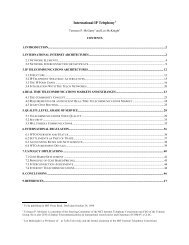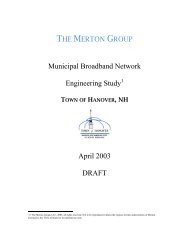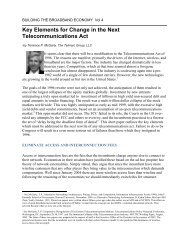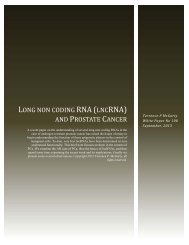progressivism, individualism, and the public ... - Telmarc Group
progressivism, individualism, and the public ... - Telmarc Group
progressivism, individualism, and the public ... - Telmarc Group
Create successful ePaper yourself
Turn your PDF publications into a flip-book with our unique Google optimized e-Paper software.
The <strong>Telmarc</strong> <strong>Group</strong><br />
PROGRESSIVISM, INDIVIDUALISM, AND THE PUBLIC<br />
INTELLECTUAL<br />
"that you think printing influenced <strong>the</strong> course s <strong>the</strong> universities taught <strong>and</strong> <strong>the</strong> role of <strong>the</strong><br />
university, altoge<strong>the</strong>r?”<br />
"No, sir, " said McLuhan, "it did not influence; printing determined both, indeed, printing<br />
determined henceforth what was going to be considered knowledge.”<br />
This concept later evolved into <strong>the</strong> medium being <strong>the</strong> message. In our context it is <strong>the</strong><br />
fact that both Kuhn <strong>and</strong> McLuhan recognized, albeit in differing fields <strong>and</strong> in differing<br />
ways, that fundamental changes in technology <strong>and</strong> technique, call it paradigm or <strong>the</strong><br />
medium, will change <strong>the</strong> world view, also <strong>the</strong> message. In fact <strong>the</strong> world view <strong>and</strong> its<br />
implementation in a governing architecture will also determine what henceforth is to be<br />
considered <strong>the</strong> law! That is applying McLuhan to this process, if we take <strong>the</strong> change in<br />
architecture to a change in <strong>the</strong> medium, <strong>the</strong>n <strong>the</strong> message, <strong>the</strong> "law", is <strong>the</strong>n morphed to<br />
what <strong>the</strong> underpinnings of <strong>the</strong> controlling group has of <strong>the</strong>ir world view.<br />
Thus, architecture is <strong>the</strong> combination of three parts;<br />
(i) <strong>the</strong> common elements, namely <strong>the</strong> entities which will comprise <strong>the</strong> structure we desire<br />
to build. This may be <strong>the</strong> electorate directly, each <strong>and</strong> every person, a selected in-group,<br />
property holders only, <strong>the</strong> exclusion of a selected out-group, such as women or slaves,<br />
(ii) <strong>the</strong> underlying effectors; <strong>the</strong>se are <strong>the</strong> governing tools available to <strong>the</strong> group<br />
governing;<br />
(iii) <strong>the</strong> world view; <strong>the</strong> way <strong>the</strong> world works for those governing based upon a set of<br />
explicit or implicit paradigms, or examples, of what <strong>the</strong> world is like.<br />
We have a conceptualization of architecture as <strong>the</strong> amalgam of <strong>the</strong>se three elements. We<br />
shall develop this construct more fully as we proceed.<br />
The concept of a world view is an overlying concept that goes to <strong>the</strong> heart of <strong>the</strong><br />
arguments made in this paper. To better underst<strong>and</strong> what it implies, we fur<strong>the</strong>r examine<br />
several common views <strong>and</strong> analyze <strong>the</strong> implications of each. If we view our world as<br />
hierarchical, <strong>the</strong>n <strong>the</strong> political structure may very well reflect that view. If we view our<br />
world as a conflict between good <strong>and</strong> bad, a Zorosateristic world, <strong>the</strong>n we may establish<br />
bulwarks against <strong>the</strong> evil, namely a strong central government against <strong>the</strong> Trusts. The<br />
world view is what we bring to <strong>the</strong> table <strong>and</strong> around which we negotiate <strong>and</strong> try to<br />
establish terms for Governing. The very observations that we make about our<br />
environment <strong>and</strong> <strong>the</strong> needs of <strong>the</strong> users of that government which we put in place will be<br />
reflected against that view.<br />
As an external observer, we at best can deconstruct <strong>the</strong> view <strong>and</strong> using <strong>the</strong> abilities of <strong>the</strong><br />
hermenutic observer, determine <strong>the</strong> intent of <strong>the</strong> builder of <strong>the</strong> networks 192 .<br />
192 See Gadamer's interpretation as discussed by Winograd <strong>and</strong> Flores, pp 27-30. Also see <strong>the</strong> historical context of <strong>the</strong><br />
hermenutic approach in <strong>the</strong> sciences as discussed by Greene in Depew <strong>and</strong> Weber, pp 9-10<br />
Page 192












